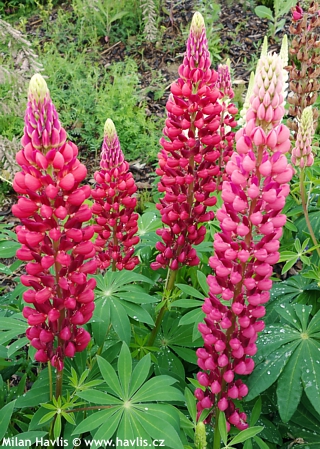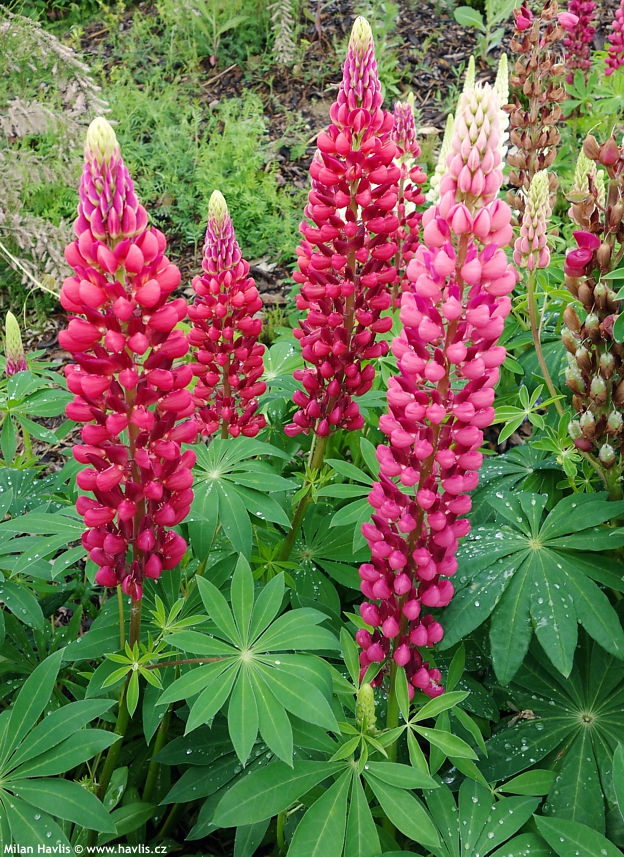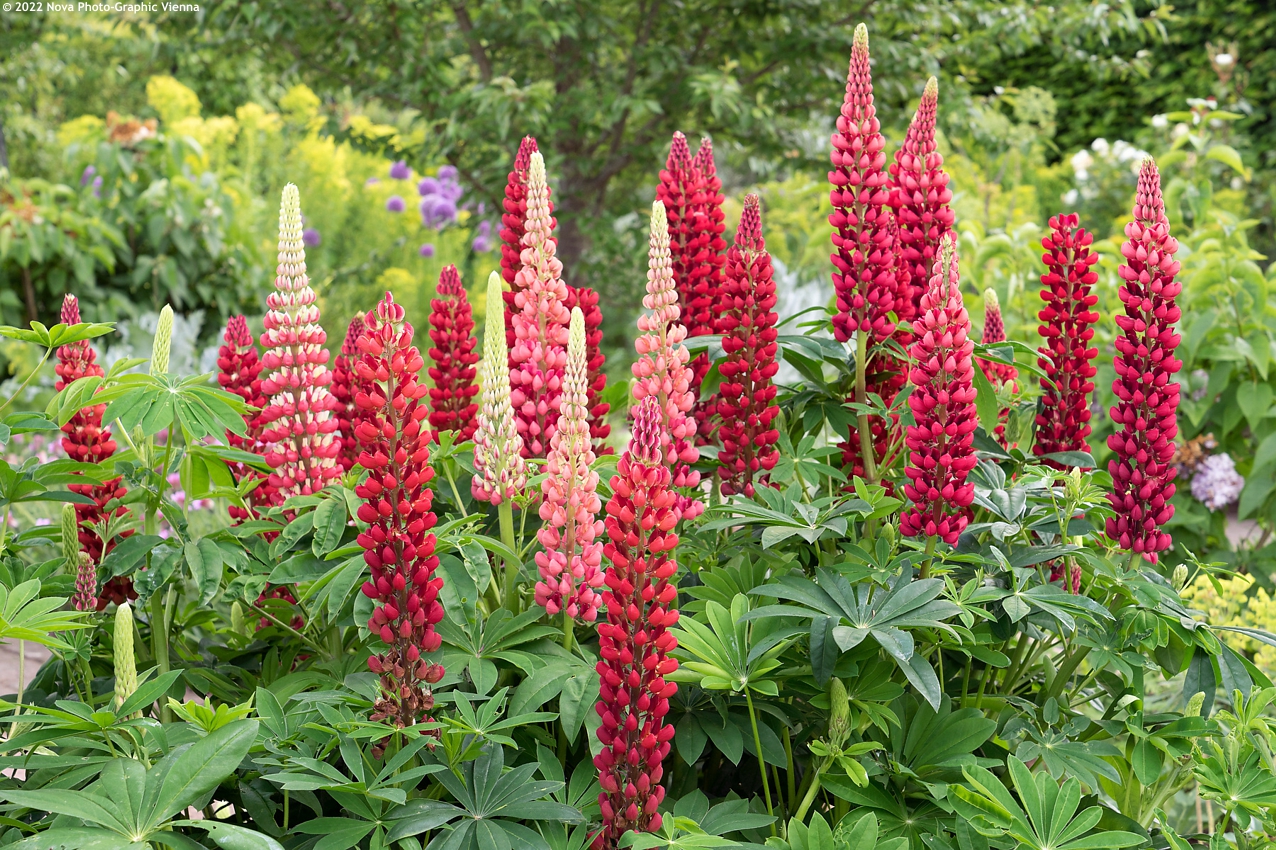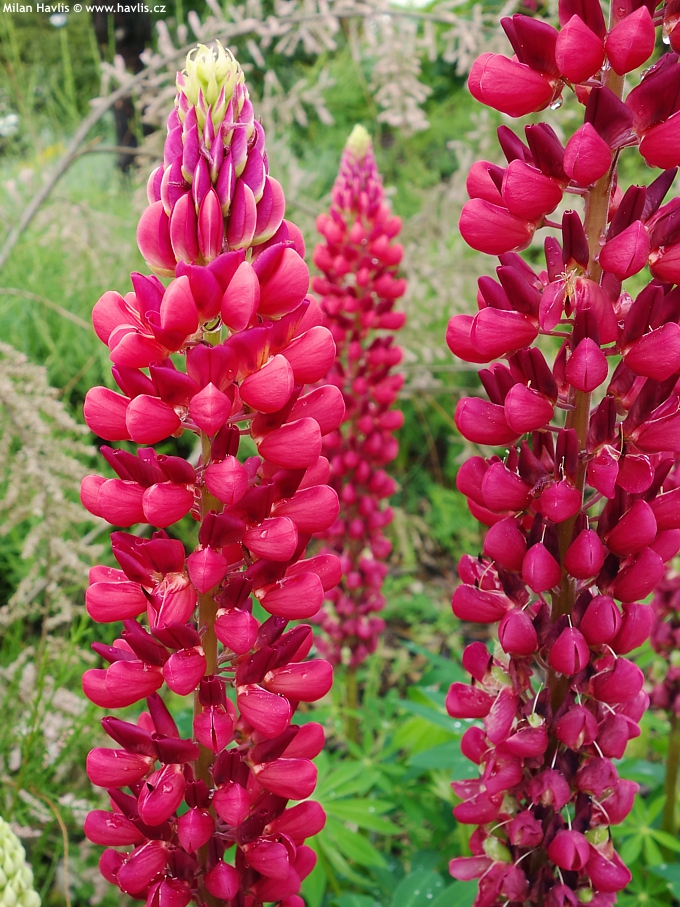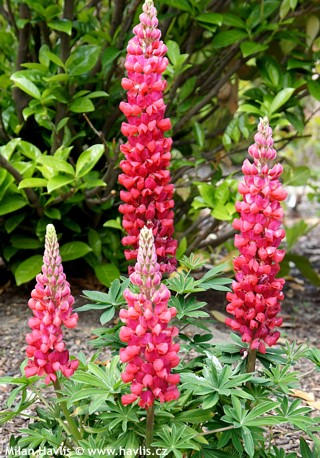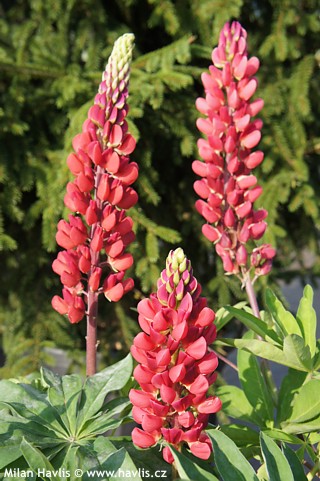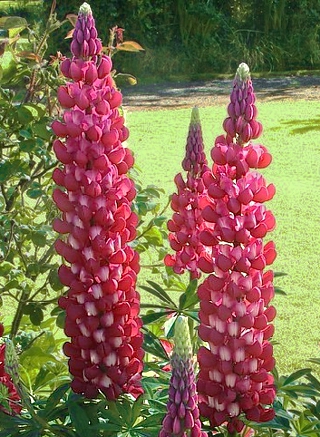Lupinus 'MY CASTLE' lupine
size/type
mid-sized perennial,mid-sized perennial
usual height
0,8-1,2m
usual width
0,3-0,5m
leaves
deciduous broadleaf
colour of leaves
flowers
showy
colour of flowers
blooming time
June
location
full to partial sun
soil type
acidic (peaty) to neutral
soil moisture requirements
evenly moist (dislikes drought)
USDA zone (lowest)
4 (down to -34°C)
winter protection
for zone 5+6

for zone 7

categorized
Lupinus
Lupines are the inevitable item of English gardens as well as Czech woodlands. They come from North America and naturally grow in sunny locations of moist woodland edges and rocky slopes where their roots establish well in crevices that never lack moisture but are free draining.Description of the plant:
My Castle lupine belongs among the so-called Russell hybrids in a Band of Noble series. All those varieties are best suited for our Central European climate as they love cooler weather and enough moisture that helps them continue producing more flowers even after the main flush. My Castle makes dense spikes composed of rich purple pink to garnet red flowers atop fleshy but strong stems 90-120 cm tall. Blooming begins in June and if spent flowers are removed as soon as they begin to fade new flowers pop up sporadically until late summer. If the plant is weak and unsightly after flowering cut it back and it will produce a nice mound of new foliage that will be attractive until the end of the growing season. Deciduous, palmate leaves are deep green and very attractive as they are finely divided. Lupines like free draining soil that retains moisture and is preferably acidic. They can fix nitrogen from the atmosphere and distribute it through their roots. This is why they are often used as pioneer plants in poor soils. The flowering spikes are sturdy but fleshy and should be planted where they can be protected from the extreme wind blasts that could bend or break them. These plants are short-lived and should be dug out in the spring every 3-5 years, woody parts removed, and new plants put pack to encourage fresh growth.
Unlike sweet-lupines whose seeds are edible, ornamental lupines (bitter-lupines) can be harmful if eaten. Unfortunately, slugs don't mind and can devastate both your seedlings as well as old clumps so choosing an effective slug repellent may be crucial. Hardy to about -34°C.
Last update 03-04-2022
QUICK PRICE OVERVIEW
CURRENTLY SOLD OUT
WANT TO TRY A SIMILAR PLANT?












